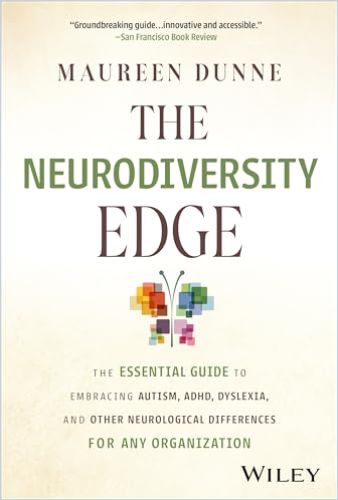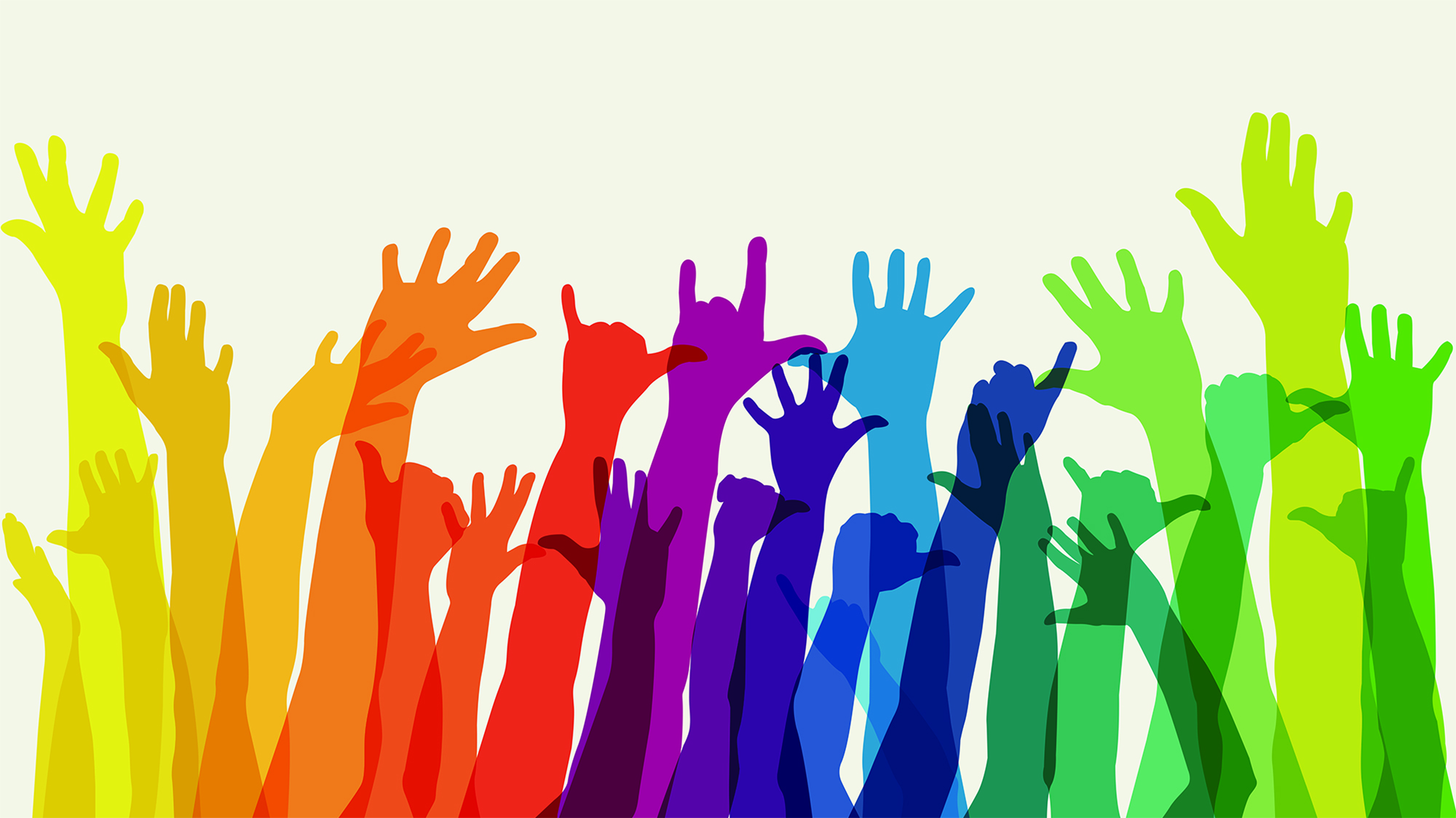“Teams Who Are Disrupted by Neurodivergence Only Stand to Benefit.”

Maureen, in your book, you write that one in five people are neurodivergent. This figure surprised me when I was researching the topic. Why do you think neurodiversity is still more of a ‘marginal phenomenon’ for many people?
I think a lot of people are surprised when they realize the scale of neurodiversity. Neurodiversity is a strengths-based framework for understanding, supporting, and valuing the rich tapestry of brain and learning differences. I have the benefit of the wisdom that comes along with having been active as a business leader, advocate, and researcher for the past two decades as the neurodiversity paradigm has taken root and blossomed into a global movement. While organizations of all sizes are becoming increasingly aware that they likely already have neurodivergent employees and are beginning to appreciate the many reasons they should recruit even more, employers still need to be more proactive in how they cultivate an organizational culture that empowers everyone to participate in and drive growth.
Although public awareness has increased in recent years, neurodivergence continues to be an untapped resource as neurodivergent people remain disproportionately unemployed or underemployed despite having the motivation and skills to succeed.
There continues to be unconscious biases that work against people whose minds differ from the neuronormative majority that can act as barriers to authentic neuroinclusion if we fail to spot these biases in action as managers, teachers, and community members.
But do you think many managers simply don’t know any better and fail to hire neurodivergent people – or is there really a reluctance based on prejudice?
In fact, a survey by the Institute of Leadership & Management in 2020 showed that a shocking 50% of employers openly admitted that they would not hire a neurodivergent jobseeker. In my book, The Neurodiversity Edge, I refer to these unconscious biases that can get in the way of inclusivity of all kinds as “invisible cockroaches” in the mind. These mental short-cuts, when we fail to spot them, insidiously have the potential to sneak into the basement of our minds to “size people up” based on limited evidence or conjure up stereotypes about what neurodivergent people look like based on the two or three people one has been exposed to in the past.

Fortunately, organizations can do much to remove barriers to authentic neuroinclusion, but the process must go beyond superficial accommodations and rhetoric. Organizations need to take a values-driven approach to inclusivity rather than a “check the box” approach to ensure that the values espoused are consistent with the actual practices embedded within the DNA of organizational culture. Organizations should be focused on ensuring that the values they espouse on the bulletin board or codify in policy handbooks are in alignment with the day-to-day habits demonstrated by their teams. In my book, I introduce this dynamic as “The Three C’s,” where Codification and Conduct drive Culture.
When an organizational culture authentically embraces cognitive and experiential diversity as a core value, it permeates the entire organization, from the mail room to the boardroom.
One of the advantages for companies when they create a cognitively inclusive working environment, so to speak, is that they benefit from ‘complementary cognition’. Could you elaborate on that?
We often examine skills and talent from the narrow lens of individual traits and contributions, unconsciously enslaved by the deficit legacy model. The example I give in the book comes from honeybee hives who rely on their most important social phenomena, the waggle dance, to communicate with each other already-known sources of pollen. One in 5 bees diverge from the others and don’t follow the waggle dance. The deficit-based framework sees 5 bees, recognizing 4 of them with their gold stars for successfully fitting in and bemoaning the misfit, who appears to randomly fly off in different directions instead of performing the waggle dance. But the strength-based paradigm sees something different. That divergent bee appears to expand the territory of operations, perhaps even being disproportionately responsible for discovering new sources of pollen, benefiting the entire hive community. I think it is critically important that we expand our boundaries to allow for broader acceptance of all kinds of minds. This is especially true given the future we have in front of us with accelerating change due to AI. We need cognitive and experiential diversity and everyone’s contributions where skills within teams and communities thrive from that diversity as a core value. We can think about this from the perspective of complementary cognition or “neurodiversification” – a concept I discuss in the book.
Neurodiversification is hugely important where complementary and diverse perspectives on teams are valued and where people are not cognitively, perceptually, analytically, and experientially correlated with each other.
Businesses, communities, and schools that value cognitively heterogeneous groups are better positioned to solve our most challenging problems as there is less of a risk of missing blind spots and more potential for breakthrough innovation.
Do neurotypical employees perhaps also benefit from an inclusive working environment?
Absolutely. Authentic neuroinclusion is fundamentally about maximizing what any given individual can contribute within an organization and doing so in a way that appreciates and values diversity. There are so many reasons to embrace neurodivergent talent: as a core hedge against groupthink, as a diversity asset driving a wider range of cognitive and experiential resources, as an avenue to driving access to a broader talent pool. Neurotypical and neurodivergent people can learn much from each other, not only in terms of how to cultivate stronger and more resilient teams but also in terms of how to build communication and empathy bridges across neurotypes. Besides, this type of organizational culture drives many other benefits. Google’s Project Aristotle has profound implications for how top-winning organizations will structure and manage teams in the years ahead. The top finding? Cultivating a culture of Psychological Safety is the number one driver of innovation. This shouldn’t be all that surprising. A culture of Psychological Safety encourages risk-taking in terms of speaking up and expressing ideas as well as asking “stupid questions” (which are often the most important questions to get asked for any given group).
What other advantages does it have for companies to attract and keep neurodivergent people?
In much of the developed world, the context of a labor shortage adds to the huge premium on innovation that employers will increasingly rely on to stay competitive in the future we have in front of us. Uncommon skills such as nonlinear thinking, intuitive leaps of creative insight, systems thinking, creativity, and hyperfocus will become increasingly valuable as AI takes over many facets of linear thinking tasks, supercharged by combinatorial forces such as quantum computation and robotics. Many of these skills overlap with neurodivergent ways of thinking, but employers have historically undervalued these traits or have standardized hiring practices that have traditionally sidelined such talent from consideration. Organizations and communities that embrace neurodivergent people rather than exclude them will have an advantage.
What is a suitable way to find out whether there are neurodivergent people in your company who may not have dared to talk about their needs before?
The key is to ensure that everyone from every cognitive tribe feels safe and empowered to disclose their perspective and any relevant needs. Fostering this type of open and psychologically safe environment is the first and most important step toward openness from neurodivergent team members. This same approach encourages leaders to model vulnerability, encourage open dialogue, and create an environment where mistakes are viewed as learning opportunities. Other key concepts include endless questioning, clear expectations, transparent performance tracking, and establishing clear, achievable goals that all team members understand. But most important of all is the fundamental sense that no one will ever be punished for expressing a different or unique point of view or requesting clarification. Those are usually hugely valuable steps in ensuring everyone on a team is moving toward the right objectives and the most valuable “hidden profiles” and ideas have no obstruction in the path from conception to open intersubjective debate. In this mix, in my experience, you will find this same recipe results in much more openness about neurodivergence and needed accommodations without any need to pressure people explicitly to make such requests.
What would you recommend to companies or HR managers in order to interact sensitively with neurodivergent people? Both in direct and indirect contact, for example, when asking about their general needs?
As noted above, the key is to strive for a context that encourages openness and a lack of judgment. You can ask about needs and preferences once that has been established as a rock-solid foundation. But you usually won’t have to. The best evidence you have an effective culture is that you don’t have to try to force people to open up about neurodivergence. Those who wish to disclose will do it on their own when they genuinely feel accepted. Keep working toward that objective. Organizations may need to augment the process with anonymous Employee Experience Surveys and feedback to track progress. But the goal is to cultivate a cultural context that embraces neurodiversity rather than to try to devise some magic string of words that HR managers can use to get emotionally and psychologically honest responses from people who have spent most of their lives constructing strategies to blend in with the neuronormative majority.
What are typical difficulties that often arise when neurotypical and neurodivergent people work together and are perhaps misinterpreted?
The Double Empathy problem provides a fascinating window into this critical issue. We used to think that, for example, autistic people were simply indecipherable. It wasn’t that they were uniquely indecipherable to neurotypical people. They were simply indecipherable because they were missing some module of mind that was responsible for theorizing about the interior experiences of others. However, the double empathy problem sheds light on how we all have a very difficult time theorizing about the interior mental experiences of other people with different lived experiences. So, for example, it turns out that many autistic people have an easier time empathizing with other autistic people (with whom they have shared experiences in feeling different from most people and challenges with employment). At the same time, neurotypical people have an easy time empathizing with other neurotypical people but may have a hard time empathizing with autistic people. Neurotypical people might, for example, misinterpret an autistic person’s unease with small talk as rudeness because they don’t have that experience when interacting with neurotypical people similar to themselves. The answer is to cultivate shared lived experiences and to proactively build empathy bridges. I have found this to be a rapid uptake process. With openness and good faith efforts, it often takes surprisingly little to cultivate some degree of empathy between any two human beings, no matter what their cognitive tribe may be.
What are typical misconceptions of neurotypical people in relation to neurodiversity?
The most common misconceptions I come across line up in two primary directions: The first is the presumption that neurological differences are somehow automatically a burden or a deficit. Many people just assume that being different or perceiving or thinking about the world in a different way is a cross that must be borne in life for those with autism, ADHD, dyslexia, or other neurological differences and that this is just the shape of the universe. A brain flaw is assumed, and consequences will necessarily follow. This is a misconception right from the ground up because it relies on the assumption that the habits and institutional standards, and assumptions that make up our social ecosystems are somehow fixed and predestined. There’s a clash between divergent minds and established social structures. And that is very clearly to the detriment of all of us. We just need to acknowledge this misconception in a mainstream sense and wake up to the possibilities that lie ahead.
And the second misconception?
The second common misconception is that groups, teams, and organizations work better when everyone is similar in terms of lived experiences and cognitive profiles. This is commonly called “Culture Fit.” While culture breakdown is certainly not to be desired, we should value culture add over culture fit as culture fit is a timid, tepid star to steer towards and one that carries enormous risks. Adam Grant notes that, as companies grow, they start to encounter disruption from the outside and have to adapt to a context defined by constant change driven by external factors. “After they go public, the ones that hire on culture fit grow at the slowest rates… Culture fit is code for hiring a bunch of people who ‘think the same way I do.’ And it leads to groupthink and weeds out diversity of thought.”
The idea that teams who are disrupted by neurodivergence is somehow a bad thing is the misconception. The data points one way: teams who are disrupted by neurodivergence only stand to benefit.
It is also the reason why I often suggest that every board of directors should have at least one neurodivergent person.
I also found it particularly exciting that you emphasized the importance of neurodiversity in the age of AI. Can you elaborate on this a bit?
Sure. It’s quite straightforward. There’s a clear relationship between neurodivergent thinking and uncommon skills such as non-linear thinking strategies. There’s also a clear correlation between linear processing and models produced by the current paradigm leading this wave of AI innovation. One way to think about these two claims is that they point to a natural complementarity between what we might call “AI speed superintelligences” and neurodivergent minds – a complementarity borne of the balancing of superhuman linear reasoning and human cognition skewed toward lateral, non-linear leaps of insight and problem-solving, which has so far proven to be impossible to replicate through current AI models.
I feel like the increased discussion and education on neurodiversity also holds the danger of people starting to self-diagnose themselves as such. What do you think about that?
I’m not sure there’s any reason to overthink this. People will be people – neurotypical and neurodivergent alike. I truly believe we are in the early innings of establishing a lasting framework for neurological diversity within human populations. Personally, I lean toward the idea that this diversity is a natural and productive feature that has probably been hard-wired into human populations for thousands of generations – i.e., neurodiversity is a feature, not a bug. And societal attitudes swinging in this direction will naturally impact how people wish to define themselves. But this dynamic is certainly not a new thing. And it may not be relevant for organizations focused on universal design, psychological safety, and embracing the full range of human neurodiversity.
About the Author
Dr. Maureen Dunne is a cognitive scientist and a neurodiversity expert.




